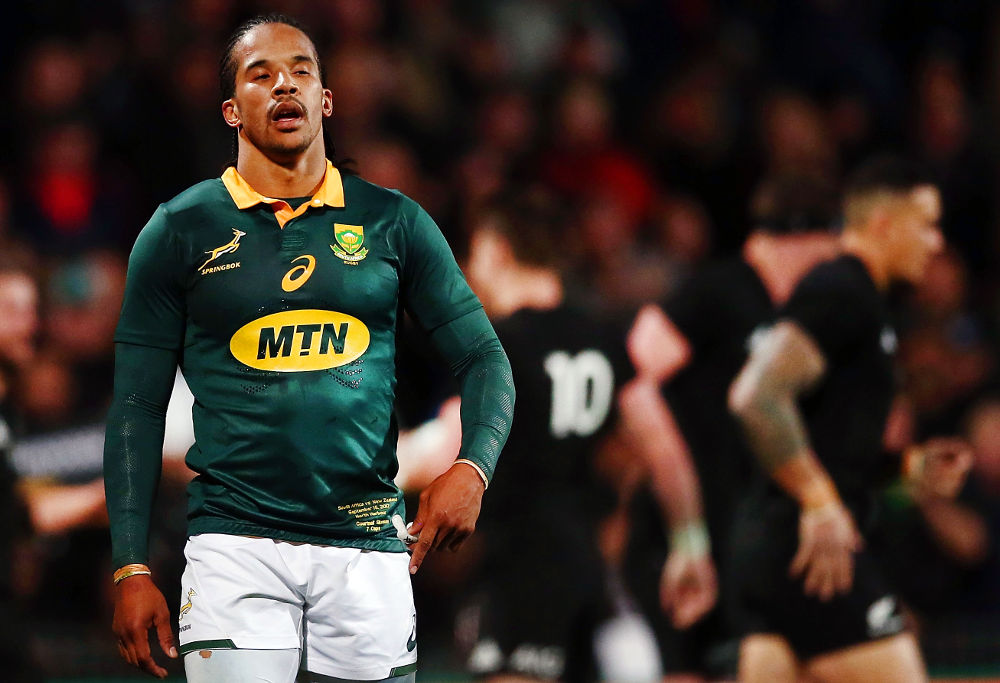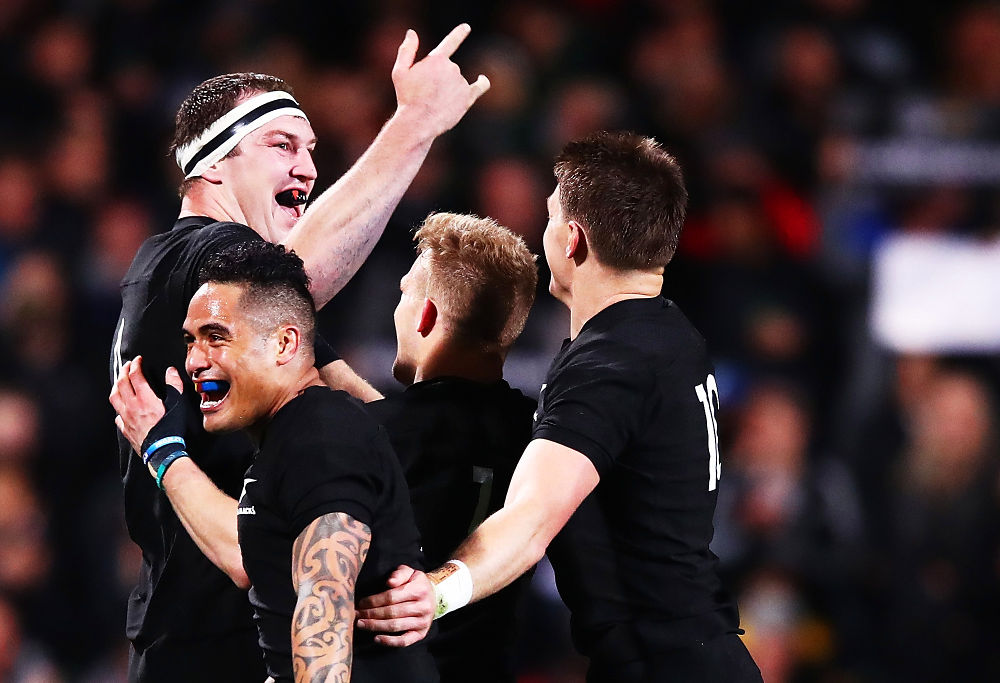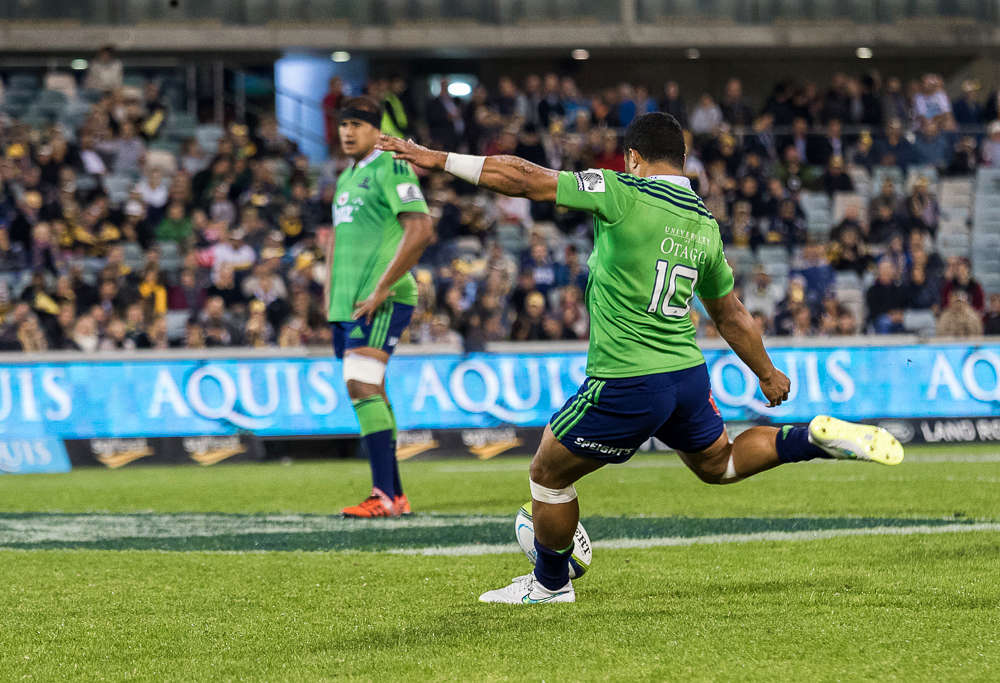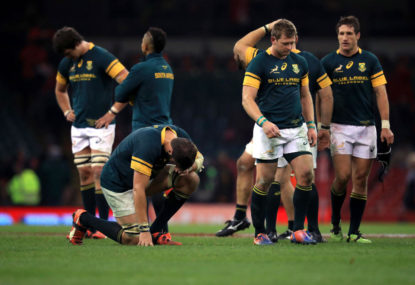South Africa’s bid to host a second Rugby World Cup omits its spiritual home – the cramped, creaky, cacophonous old stadium called Newlands.
Every space is compacted in this boxy patchwork place. From the horrific toilets and halls, to the player’s cloakrooms and rudimentary bars. The egress from the train past the pungent brewery lingers from the south or, as we chose, a beer-laden stroll down from Forester’s Arms or Barristers along the tiny Liesbeek River.
That’s the nine-kilometre stream cutting from Skeleton Gorge on the rump of Table Mountain, to Table Bay, through both the poshest and sketchiest of districts.
If you walk a while, you will find yourself in the company of Cape Crusaders, whose rugby patron saint is Sonny Bill Williams. The ratio of black to green in the Cape can seem equal at times, but once inside the friendly confines of the worlds second oldest big rugby park, it’s more clearly a four-to-one Bok tribal gathering.
Strictly speaking, we were attending the penultimate match in a tournament already won, but in reality we were just going to a Test match against the All Blacks. The mood among Bok fans was tremulous, because our internal questions were whether we were still the Kiwis’ greatest rival. That, or whether the recent willingness to let them score 57 points on us and not even fire a shot in retaliation, had doomed the Old Enemy narrative.
In typical Saffa fashion, this fear was expressed in anger. Anger at native son Allister Coetzee, who built a defensive juggernaut at the Stormers for many years typified by rugged tackling, superb scrummaging, clever and accurate kicking, and an unassailable lineout.
Where were those bedrock skills in this Bokling side? It took the All Blacks all of fifteen minutes in Albany to completely break down the Springbok defence, and then they rained clown tries down on the hapless, Springboks, who seemed to give up.

(Photo by Anthony Au-Yeung/Getty Images)
Anger also spewed preemptively on failed Stormer Elton Jantjies, whose shuffling pivot moves appear slower and slower, closing gaps for his centre pairing, who are reduced to battering rams, robbing the gasmen on the wings from any lane in which to show speed and skill.
But it was just fear. Will we be humiliated or just embarrassed? How far are we behind?
During perestroika, a delegation of Soviet automaker bureaucrats were allowed to tour a Japanese miracle car plant. All day the Russian engineers saw wonders of robotics and logistical brilliance. Trained never to betray inferiority, they merely stared, as if it was nothing to see such clear superiority.
At the end, seeing a chance to speak privately, the head Soviet asked his Japanese opposite number: ‘Tell me honestly. How far are we behind? Five years? Ten?’
The Japanese director said: ‘Forever. You are forever behind.’
Are we doomed to chase All Black yesteryears? Was 2009 the last dying whimper of competitiveness? Are we just beginning the beginning of the end? How far are we behind? Forever? Is 57 the new 30 and 0 the new 27?
Fortified by early morning runs, absurd wagers, beer and spirits, and vinegar-drowned chips to mute the sour smell of the river, the stadium, and the brewery, we settled into our seats as if forewarned by pilots of extreme turbulence.
The warmups were similar by both squads, who were almost identical in size and build, now. Long gone is any notion of ‘huge’ Boks playing normal-sized All Blacks.
Liam Squire is the same size as Pieter-Steph du Toit, all the locks on the field are within an inch of the same height, the visitors have one big centre, whippet halves, and a few mites; about the same as the home team.
The only mismatch appeared to be at hooker, where Malcolm Marx strides as if a statue in Vienna, while Dane Coles is modest in size.
The drills are similar now; compared even to my description of the 2015 semifinal between these teams (and doesn’t that 18-20 match seem like a million years ago).
However, surly Jantjies seems to be lazy even pre-match.
The match in Cape Town did not start differently from Albany: hammer and tongs, thunder and lightning, assault and battery.
The difference was it took 79 minutes for the All Blacks (29 minutes into the second half after a 50-minute first half) to actually break down the Bok defence and score a try. Oh, and the Boks only committed four handling errors. Handre Pollard made a telling cameo. And there was this man Marx.
The first half saw both sides soak up pressure from the other, defuse raids with brutal tackling and turnovers, and the classic haymakers of a heavyweight bout. This time, All Black turnovers won did not automatically lead to a Raymond Rhule missed tackle and a swan dive over the line by a jubilant Kiwi flyer.
For one bright shining day (or maybe more?) the Boks were back to being Bokke.
Heavy, horrible and rawboned defence; scrambling after a break, immovable at times, and giving nothing easy.
Is anyone actually sure Ireland or England would have been able to score a try against the Boks in this mood?
Steve Hansen likened it to stopping barrels rolling downhill at you.
The bulldozers were Pieter-Steph du Toit and his quick pick-and-go style (20 carries); flame-haired Steven Kitshoff (15 strong carries and two superlative catches, a one-handed grab and a bootlace save) after the All Blacks tried to bully him early; a passionate Eben Etzebeth who broke five tackles during his 14 savage runs; and Marx, who played one of the most effective tests by a hooker in history, after looking fragile mentally in Albany at lineout time.
Both teams pinched one lineout a piece, so this was not the story this time. It was Bok Force Trauma with box kicks, pillars knocked down, smashmouth rugby, and relentlessness.
If only the home side had scrummed better, substituted better, and kicked better, a victory seemed on the cards. All three of those areas are ‘controllable’ and the Boks should rue the way they lost the day.
The Boks survived the worst of it though: magic passes by Nehe Milner-Skudder, a muffed restart, the freakish Reiko Ioane crossing the chalk but not scoring (courtesy of a very good defensive effort by the still-unconvincing Jesse Kriel at 13), strangely inaccurate ruck cleaning by Sam Whitelock, Scott Barrett, Sam Cane, and Dean Coles as well as Jantjies gave up a try on a platter.
It was 3-3 and eight minutes before halftime. In the three minutes prior to Jantjies trying to kick a ball through Beauden Barrett’s elbow, the Boks had constructed a decent maul at their own ten-metre line, built a few phases to explore the seams, used Etzebeth, du Toit, and Marx and made good progress. Francois Louw then reclaimed one of the only well-weighted box kicks, spilled by Damian McKenzie, and reset with workhorse Jan Serfontein.

(Photo by Hannah Peters/Getty Images)
But then Jantjies, with plenty of space and time, and Kriel and unused Dillyn Leyds open to his right, on the Boks’ own 42 metre line, stab-kicked the ball into Barrett’s arm. Barrett did not even jump. The ball hit him in the elbow or thereabouts.
There were about twelve different things Jantjies could have done in that situation, and eleven were fine. Feint the kick, take the tackle, skip pass, hoist a skyball with Siya Kolisi and Leyds perfectly placed to chase, dummy-kick, cut inside back to his forwards who were wildly rampant, pass normally to Kriel, or just sit down.
But he tried to kick the ball through Barrett’s elbow.
After a sequence of bobbles, during which Jantjies began jogging back and failed to beat Kolisi or the worlds slowest scrumhalf back to try and prevent the consequence of his rugby crime, Ryan ‘Crotchy’ Crotty ‘dotted down.’ Fair enough; at the ground, I saw it as a try all day, and only my Kiwi mates texting me made me question it. For me, it was a classic Jantjies brain freeze, thinking he had more time than he did; the prince of charge-downs.
All credit to the Bok pack in shaking off this waste of great ball by a silly flyhalf: Cane and Liam Squire continued to be blown off the ball, Marx kept finding his jumpers and running around like he owned the place, and Etzebeth prolonged the first half, along with Macca, and nobody could say the home team looked less fresh than the ultra-fit visitors.
Interestingly, Lood de Jager ran the lineout with Marx better than fellow Lion, Franco Mostert had, and Etzebeth seemed to partner with de Jager better in cleaning rucks. They were an insanely physical ‘bracket.’
But the pack also had to overcome the planking problems of Ruan Dreyer, picked by stubborn coach Coetzee despite leading Super Rugby in scrum penalties (in limited minutes, as he is not even the Lions’ No.1 tighthead) and the availability of the most dominant tighthead in Super Rugby in 2017, hometown behemoth 133 kg Wilco Louw.
Only scrum coach Matt Proudfoot could explain why the Boks negated one clear advantage – the All Blacks are also scraping the bottom of their loosehead bottle with Kane Hames, at scrum time, at least.
Dreyer planked, as he did against Australia, and was pinged three times. He could have been penalised more. South Africa was only whistled five times on the day. Wilco Louw came on and the scrum was a Bok weapon the rest of the day. I will say no more.
The Boks overcame Dreyer’s planking and Jantjies’ belief in a porous BBBBB arm, to score an 18-phase try early in the second half.
Life was good at Newlands.
The Boks were keeping ball in hand, using the big boys, and keeping the game out of their brittle halves’ hands. Until the 60th minute, when Cronje, who is a guy everyone can love and support but is a good club level halfback and nothing more, threw a loose pass at poor Skosan’s shoulder, scooped up by speed merchant Ioane, who showboated a bit on his try, and will probably be sorted by Kieran Read and the other seniors.
At 10-15, with Barrett gone, and an obviously well-working Bok plan on the day, I allowed myself to indulge in some belief.
My neighbour and I had a wager on the outcome; he is a lifelong fan of the All Blacks and the Crusaders.
When Handre Pollard trotted on with fifteen to go, I bellowed like a gorilla, and punched my treasonous nemesis neighbour four or five times.
“We’re going to take it now. Elton off our back. Go boy. Take it Pollard.”
A star from the Western Cape, Pollard took it hard to the line. The backline finally looked dangerous. A half-break here and there, and then that moment of magic Pollard almost always creates.
A real break, a perfect offload to steaming Marx, who drew the last defender and put a perfect pass in the surprisingly quick Jean-Luc du Preez .
“Upset, upset, upset,” I chanted into my neighbour’s disloyal ear.
But then, one too many box kicks that got out of the box. A beautiful fend by David Havili on my hero Handre, a Sonny Bill Williams-like offload to cheeky Macca, who outdid Ioane on his Ashtonesque try, having bamboozled the just-on Damian de Allende.
That was the first time the All Blacks broke the cover defence.
It’s a good thing Lima Sopoaga converted Macca’s try, because the fullback could have easily rounded to go under the posts, instead of planting a one-handed Nadia Comenici touchdown out wide.

(Photo: John Youngs photography)
On the whole, the Boks had broken down the All Blacks’ defence more often than vice versa, but poor kicking, Dreyer’s scrum woes, and Elton’s decision to kick through Barrett’s corporeal body gave the ruthless world champions just the chances needed.
For some reason, de Allende was on. Why? Serfontein had been the best Bok back. He’s a clever defender, and underrated on attack. The undercooked de Allende was the matador to the Macca bull, and then decided to give Sapoaga a do-over on his missed drop goal attempt.
The almost unbelievably good Marx was smart enough to score quickly, hand the ball to Jantjies, who did well to convert the maul try with two minutes to go, and a one-point game in the balance, but it’s a tall order to march all the way, especially with a referee who let the breakdown be wild.
Matt Todd was very good on the day, as were the All Blacks’ back three, allied to a moment of brilliance, and it was done and dusted.
I saw a video from the excellent All Blacks’ PR arm, with Anton Lienert-Brown interviewing his mates, as the Boks and All Blacks share a beer in blazers.
Read and Etzebeth seemed to be having a good long laugh, but Dreyer was not. Macca and Ioane admitted fault in their tries and we will probably see two-handed dot-downs from now on.
A battered Cane, a smiling Hansen, a relieved Coetzee and a great sense of comraderie all the way around.
The rivalry has some oxygen, yet. But for it to resume, really, it isn’t enough for South Africa to do what Meyer did (play great against the Kiwis, but lose to Japan and too often to others). The Boks need to bully Ireland, continue to beat England, dominate the other Celts, win at home against Australia, and start to win close ones against the best.
The stadium did not clear quickly. Nobody wanted to leave.
Can we call each other rivals, yet? Maybe not. But the whole rugby world saw what a Bok team with only 300 or so caps, a jittery flyhalf, a glacier-like scrumhalf, and a tighthead who cannot scrum, can do to the All Blacks.
Maybe it’s another false dawn, and maybe the only way to really get back is to fire Coetzee sooner than later, but he saved his job again, and the quota is real, so if Pollard is to resume his Test career as the Bok field general, Rudy Paige will need to replace Cronje, and perhaps the rugged pilfer king Lukhanyo Am should take over from Kriel at 13, with Warrick Gelant getting a look at the fullback position.
Here’s hoping the rivalry can re-emerge.
































































































